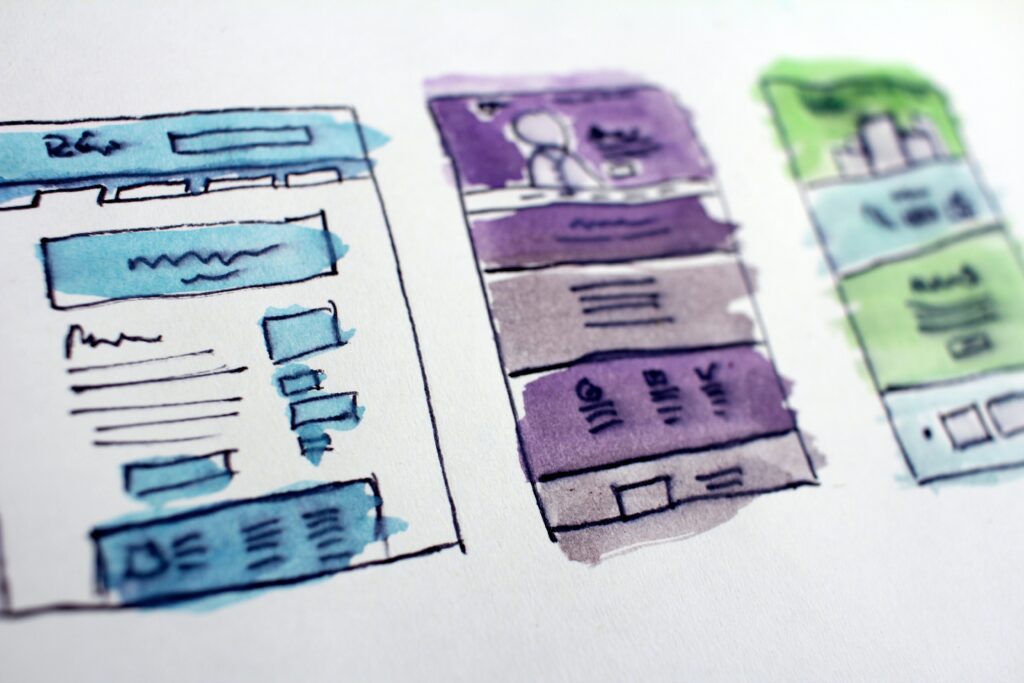The Power Of A Great Web Design is the ability to convey your message quickly and effectively. Today’s internet consumers are impatient. In fact, 30 percent of them expect the site to load in one second or less. And half of them expect it to load in two seconds or less. Every millisecond beyond that increases the odds of losing that visitor.
Less Is More Approach
The Less is more approach to web design is a reflection of the Minimalism theory and focuses on offering the minimum essentials to users. In web design, this means eliminating all extra text, graphics, and animations that don’t directly contribute to the design. Instead, focus on how visitors can benefit from your products and services, and make that information as clear as possible.
The Less is more approach to web design is an established trend in modern design. Many experienced designers have embraced this approach, and it is continuing to increase in popularity. Web designers that practice this approach to design are often admired for their ability to pare down a web design to its most essential components. A simple, even layout is the key to mastering this approach.
Storytelling
Storytelling is a critical aspect of the design of a website. It can break through the fog of information overload and inspire an audience to interact with your content. Psychologists believe that stories provide a sense of meaning and purpose that people can relate to. They also encourage participation and sharing.
Storytelling is an effective tool to attract website visitors and make them more likely to purchase from you. It allows you to create an emotional connection with your audience while conveying a brand message. A well-designed website can also make information memorable by incorporating visual storytelling.
Storytelling can be achieved through images and fonts. Images are an important part of visual storytelling and are present on most web pages. An expert graphic designer knows how to use imagery to create magic. Using fonts effectively plays a crucial role in conveying a message.

Colors
When creating a website, the colors used should be relevant to the content on the page. This way, you can appeal to the emotional response of your visitors. Consider what you want the color scheme to convey, and try not to overdo it. Pink, for example, is an excellent choice for a website that promotes health or wellness. It also lends itself to products and services related to babies and confectionery.
Colors can also help drive your call to action, branding, and product messaging. In fact, research has shown that eighty percent of viewers recognize brands more quickly when the colors are appealing. Moreover, they guide the user’s experience of the website, and they can help create a positive impact on their mood and decision-making process. Therefore, learning about color theory is an essential skill for any web designer.
Navigation
Your website’s navigation is one of the most important aspects. Whether your site is an e-commerce site or a blog that offers useful information, your visitors should easily find what they are looking for. Having easy navigation is crucial for the user experience and SEO.
To help your visitors navigate easily, you should create a navigation bar with visible labels. The labels should be large and easily clickable. Links should also be searchable. You can also organize your navigation bar into categories so that it is easier for visitors to find what they are looking for.
The three-click rule says that a user should be able to access all the information on a website within three clicks. However, this idea has been largely discredited. According to one study, visitors were not more likely to abandon a task after three clicks than after twelve or even twenty-five clicks.
CTAs
A good CTA is a simple button or a text link that takes the user to a specific action immediately. For example, a “subscribe” button will send the user to an email sign-up form. On mobile devices, a “call now” button will open the phone app. Choosing the right placement for your CTA is vital for success. It is important to test the various locations before choosing the most effective one.
A good CTA is strategically placed throughout a website. This allows it to stand out and draw the visitor’s attention to important details without cluttering the site. This can increase sales and conversion rates.
Request your free quote for a professionally designed and developed website.




